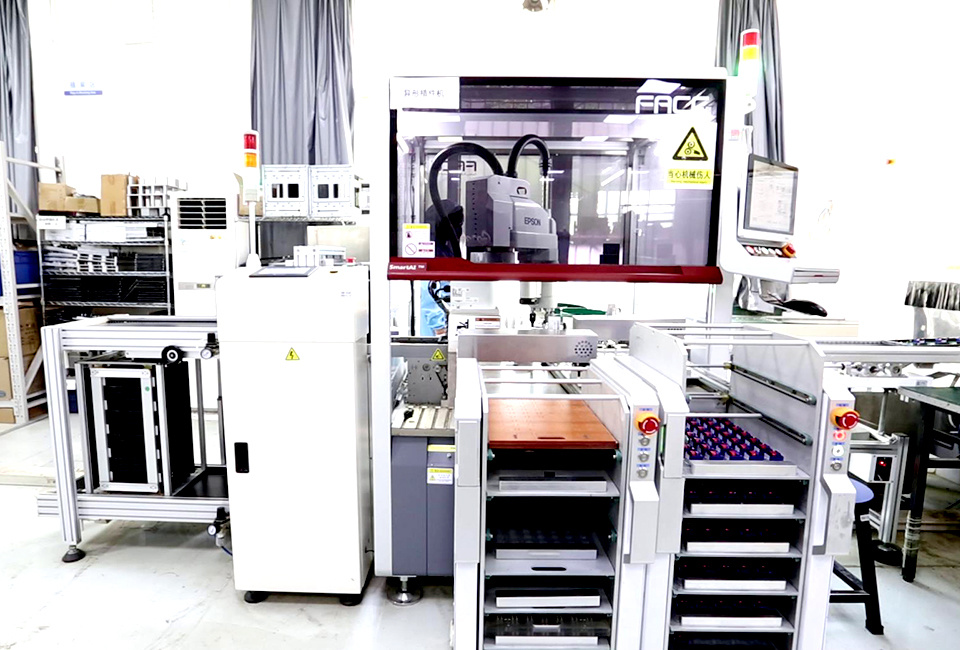Maximizing Water Quality Analysis with High Turbidity Data Acquisition Terminals
2025-05-29
High turbidity data acquisition terminals are specialized devices designed to measure the turbidity levels in various water sources. Turbidity is a key parameter indicating the cloudiness or haziness of water caused by suspended particles. In the medical and pharmaceutical sectors, maintaining water quality is vital for both research and operational purposes. High turbidity levels can indicate con
High turbidity data acquisition terminals are specialized devices designed to measure the turbidity levels in various water sources. Turbidity is a key parameter indicating the cloudiness or haziness of water caused by suspended particles. In the medical and pharmaceutical sectors, maintaining water quality is vital for both research and operational purposes. High turbidity levels can indicate contamination, which can adversely affect experiments, product quality, and patient safety.
The operation of high turbidity data acquisition terminals relies on advanced optical methods such as nephelometry and transmissometry. These techniques employ light scatter to quantify the concentration of suspended particles in water. The ability to provide real-time data is particularly beneficial, allowing for immediate action to be taken if turbidity levels exceed acceptable limits. This real-time monitoring capability is essential, as it enables pharmaceutical laboratories and healthcare facilities to ensure the integrity of their water supply continually.
Moreover, the integration of high turbidity data acquisition terminals with modern data management systems enhances their utility. The collected data can be analyzed and visualized through software applications, allowing professionals to track trends over time and make informed decisions regarding water treatment processes. This integration also facilitates compliance with regulatory requirements, as detailed reports can be generated for audits and inspections.
In addition to their technical capabilities, high turbidity data acquisition terminals also offer user-friendly interfaces that simplify the monitoring process. Many models are designed with intuitive controls and display systems that make it easier for operators to interpret data accurately. Training personnel to effectively use these devices is essential, as proper operation directly contributes to the reliability of water quality assessments.
In conclusion, high turbidity data acquisition terminals are indispensable tools in the pharmaceutical and healthcare industries. Their ability to provide precise measurements of water turbidity not only supports compliance with safety regulations but also ensures the safety and efficacy of products and research outcomes. For professionals in these fields, investing in advanced turbidity measurement technology is a step towards enhancing water quality management and safeguarding public health.
The operation of high turbidity data acquisition terminals relies on advanced optical methods such as nephelometry and transmissometry. These techniques employ light scatter to quantify the concentration of suspended particles in water. The ability to provide real-time data is particularly beneficial, allowing for immediate action to be taken if turbidity levels exceed acceptable limits. This real-time monitoring capability is essential, as it enables pharmaceutical laboratories and healthcare facilities to ensure the integrity of their water supply continually.
Moreover, the integration of high turbidity data acquisition terminals with modern data management systems enhances their utility. The collected data can be analyzed and visualized through software applications, allowing professionals to track trends over time and make informed decisions regarding water treatment processes. This integration also facilitates compliance with regulatory requirements, as detailed reports can be generated for audits and inspections.
In addition to their technical capabilities, high turbidity data acquisition terminals also offer user-friendly interfaces that simplify the monitoring process. Many models are designed with intuitive controls and display systems that make it easier for operators to interpret data accurately. Training personnel to effectively use these devices is essential, as proper operation directly contributes to the reliability of water quality assessments.
In conclusion, high turbidity data acquisition terminals are indispensable tools in the pharmaceutical and healthcare industries. Their ability to provide precise measurements of water turbidity not only supports compliance with safety regulations but also ensures the safety and efficacy of products and research outcomes. For professionals in these fields, investing in advanced turbidity measurement technology is a step towards enhancing water quality management and safeguarding public health.
High Turbidity Data Acquisition Terminal
RELATED NEWS
The Impact of Online Turbidity Analysis on Water Safety Measures
2025-06-05
The Impact of Online Turbidity Analysis on Water Safety Measures
Introduction: Understanding the Importance of Water Safety
Water is a fundamental resource for sustaining life, yet ensuring its safety is a significant challenge faced by communities worldwide. Contaminated water can lead to serious health problems, making effective monitoring and analysis crucial. One of the critical parameters
Maximizing Water Quality Analysis with High Turbidity Data Acquisition Terminals
2025-05-29
High turbidity data acquisition terminals are specialized devices designed to measure the turbidity levels in various water sources. Turbidity is a key parameter indicating the cloudiness or haziness of water caused by suspended particles. In the medical and pharmaceutical sectors, maintaining water quality is vital for both research and operational purposes. High turbidity levels can indicate con
Unleashing the Power of Digital Multi-parameter Integration Sensors in Analytical Instruments
2025-05-22
Unleashing the Power of Digital Multi-parameter Integration Sensors in Analytical Instruments
Table of Contents
1. Introduction to Digital Multi-parameter Integration Sensors
2. The Importance of Multi-parameter Sensors in Analytical Instruments
3. How Digital Multi-parameter Integration Sensors Work
4. Benefits of Using Digital Multi-parameter Sensors
5. Applications of Multi




